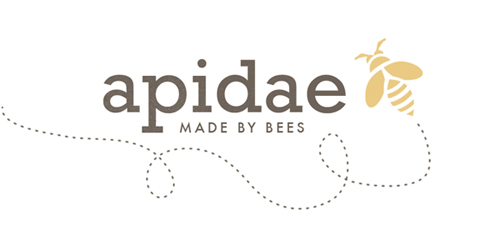Unfortunately, the varroa mite is a very real threat to the honey bee population. And it's a good thing I didn't know too much about this very tiny but evil parasite before I got into beekeeping or it might have made me think twice. But with some work on the part of the beekeeper, you can keep these pests at bay.

The varroa mite exists only in honey bee colonies. It attaches itself to the bodies of the honey bees and sucks off of them. A large infestation of mites will cause the death of the honey bee colony. For this reason alone, honey bees need beekeepers to survive. So that's where I come in.

Formic acid is a natural treatment used to fight the varroa mite here in Germany. I performed the first treatment on my colonies immediately following the last honey harvest in July. Depending on the season and when you harvest your honey, you could be looking at beginning varroa treatment as late as August or September. Several methods exist for treatment with formic acid. I opted for the so-called sponge method.
Be sure that the temperature is over 12º C (to ensure that the acid evaporates within the hive) but under 25º C (to ensure that the acid doesn't evaporate too quickly and shock the bees) and that the weather is dry, not raining. I kept my formic acid in the refrigerator before use to slow down the evaporation process and avoid any possible shock to the bees.
I dampened the sponge cloths before applying the formic acid slightly so that the cloth quickly absorbed the acid. I added a light piece of mesh fabric (as used for window screens) to the top of the frames as I didn't want to apply the acid soaked cloth directly to the frames. Be sure to wear both eye protection and gloves when working with the acid as it is toxic. And be extremely careful to not inhale any of the acid!

Use 2ml of 60% formic acid per frame (I have 11 Deutsch Normal sized frames per box) so 2ml x 22 frames = 44 ml per hive for my two box hives. Use a syringe with tube attachment to measure the acid and apply to the dampened cloth. I used two cloths per hive (22ml of formic acid applied to each cloth). To ensure that the acid has enough room to evenly evaporate, I added an additional empty super on top of the hive for the duration of treatment.


This whole process gets repeated two additional times to ensure that all of the bees have been treated. Plan about six days between each treatment. Brood is capped for 12 days before hatching so by treating the bees in three intervals, you will reach all of the bees.
Add the bottom board during each treatment to ensure that the formic acid does not evaporate out of the hive. This also enables you to test the success of the treatment by counting the fallen mites. I line my bottom board with oil-soaked paper towels so that the mites stick to the board.
Fourteen days after the final treatment, do a mite count using the bottom board. This is the amount of time needed to check the actual mite count and not the count due to the treatment. Treatment is considered successful if the mite count is under one mite per day. Keep checking every two to three weeks during the rest of the flying season. Better safe than sorry! If treatment was not successful, wait two weeks before beginning a second round to give the bees a chance to build up some more brood before winter as brood is severely reduced during treatment.
You should control the number of varroa mites in the hive by using the bottom board throughout the year. Take a count in July to see if you should already begin with treatment (if more than ten mites per day, you need to start treatment immediately). Count again in November. If more than one mite per day, you must treat with oxalic acid.
I treated my bees in December with Oxuvar 5,7 %. As with the formic acid, be sure to wear safety goggles and gloves. The temperature should be at least 7ºC. Treatment will not be effective if the hive has brood. For this reason, you should treat the bees following a three week period of frost, somewhere between early November and Christmas. Oxalic acid can only be used once for treatment.

Warm the oxalic acid in a warm water bath to 35º C. Open the sealed container and add the sugar (275g sugar for the 275g bottle). Close and shake the bottle until the sugar has completely dissolved. 20ml of oxalic acid is recommended per box so since I chose to winter my bees in two boxes, I use 40ml per hive. Using the syringe, the acid is then dripped directly onto the bees. You must first assess where the cluster of bees is located. This can usually be done by looking through the gaps between the frames. Where you can easily see to the bottom of the hive, no bees. Where you can't see through is where the cluster is located.
Just a few more weeks and I will know if my bees made it safely through the Winter. Fingers crossed!
